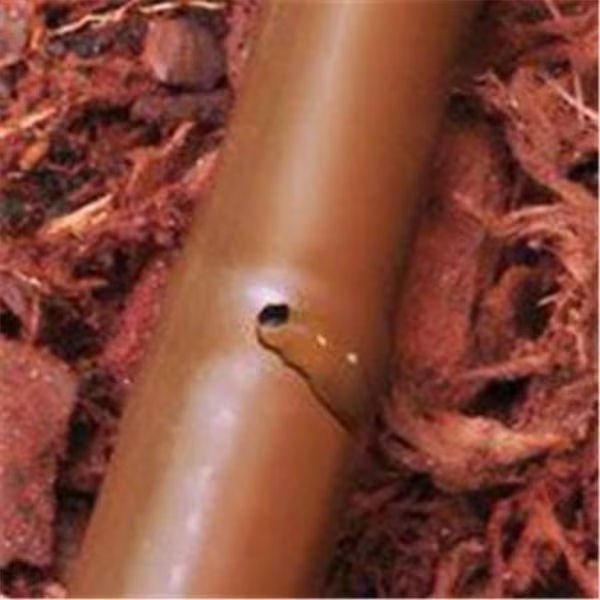|
Annual Spring Quick - Irrigation Check
|
|
|
Bulletin #TP1052 |
Horticultural Observations |
There are some things you should check into in order to make sure your plants do well this summer.
◊ A few commonly used drip emitters
◊ Each plant needs enough water
◊ How Many Emitters does a plant need?
If you have some plants that struggled this past winter from frost damage, keep you eye on them. The cold may have weakened the plants and now they need to survive some high temps. If you successfully coddled them along through the spring, bringing them back from the brink, you surely don't want to lose them now. An irrigation check should definitely be done for all these plants. Resist the temptation to over-water them when it gets hot. Keeping the soil overly wet doesn't help them at all. In fact it can be the very thing that pushes them over the edge. If one of your recovering plants begins to show excessive heat symptoms cover it with some nylon screening. Don't do summer pruning.
Take a
walk through your landscape with a notepad and pen. Jot down any plant that
looks like it may need some irrigation attention. Avoid the temptation to make
repairs on the spot as you may never finish the inspection. If you plan to do
an evening inspection, when the temps are nicer, make sure you have new
batteries for that flashlight.
(top)
First look for emitters that don't work or are partially plugged. Emitters that are adjustable and not putting out much water are also on the list. You need to know how much water is supposed to come out of an emitter in order to know if it is performing well.
|
Use a measuring tablespoon, and time how long till your measure fills. |
Here is a good rule of thumb; each emitter should put out a minimum of ½ gallon of water on a watering day. Most should put out between 1 and 2 gallons.
If it takes longer than the listed time to fill the measuring spoon, the plant is not getting deep water.
As you can see, if it takes 14 seconds to get a tablespoon the rate is 1gph so, a 7 second fill would indicate 2gph, etc. Three times during the day for 20 minutes each is the equivalent of 60 minutes.
A few of the more commonly used drip emitters
|
|
|
|
|
|
|
|
|
Flow rating information imprinted on the emitter is generally specified in "liters" not gallons, so you would divide by 4 to get an approximate gallon equivalent.
Once you
know how much water your emitters are putting out, you have a good chance of
preventing your plants from dying of drought. Insufficient water equals shallow
water, and subsequent shallow roots and summer stress. Desert type drought
tolerant plants can survive on ½ gallon per emitter location, while more
traditional plants will require from 1 to 2 gallons (depending on soil and
amount of sun). If your results show that you not getting this, come into Star
Nursery and talk with our irrigation people. There can be a number of reasons
for the problem, from too many emitters causing low pressure, to a plugged
emitter.
(top)
How Many Emitters does a plant need?
The next
issue to inspect is for an adequate number of emitters per plant. Again with a
rule of thumb; Clay-type soils will typically have a spread of 2-4 sq. ft. (with
a 1 gallon application) for each emitter. A traditional shrub, three feet in
height and width would generally do well with 9 sq. ft. of watered root
system. Many similarly sized desert shrubs could tolerate a root system 60%
that size. Larger shrubs need larger root systems in order to tolerate our
summers. If you have enough emitters putting out deep enough water, and you
didn't forget to feed them, chances are that you plants will do well.
Now that we
have our irrigation up to speed, are there some new plants we’d like to add? If
so, what can we plant now that the heat is with us? First, know where you
intend to plant. Is the location afternoon sun or morning sun? With afternoon
shade you still have many choices that will do just fine. Use caution if the
spot is blazing hot in the afternoon. Most desert type plants will tolerate
being planted in these areas during the summer, but not too many traditional
plants will. For tropical summer color, check out the Yellow Bells and
Honeysuckles; they love the heat!
(top)
Content, Editing and Updating by Garden Galaxy
©
2024 www.GardenGalaxy.xyz






